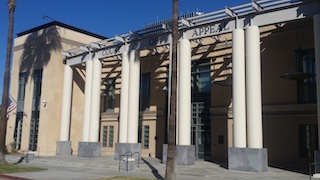In June 1999, Michael Conner and Phillip Reeves got into a fight with two other men in Riverside County. Conner fired a gun at the two other men and several days later, law enforcement interviewed Reeves about the killing.
Three months later, in September 1999, Conner and Sherwood Don Jenkins tracked down Reeves and asked him if he “snitched” on Conner.
Conner apparently did not like Reeves’ answer and believed Reeves had given the gun to police, so they demanded he show them he had not done so by producing the gun.
When Reeves could not produce the gun, Jenkins then told Conner, “He’s the only witness. You got to kill him.” Conner and Jenkins then took Reeves to a landfill, when Reeves attempted to escape. Jenkins told Reeves, “You better chase him; he’s getting away from you."
Conner chased after Reeves and once he caught him, he strangled Reeves over a ten-minute period. Conner also struck Reeves in the head several times. Conner then shot Reeves multiple times, killing him. Jenkins then helped Conner light Reeves' clothes on fire.
Police then came to the landfill. Jenkins and Conner fled and both were later caught.
The case eventually went to trial. In the People’s closing argument, the prosecutor acknowledged that Jenkins “was not the one who killed Reeves, based on the evidence.” However, he argued Jenkins was liable for murder under three possible theories: (1) first degree murder under the felony murder rule; (2) first or second degree murder under the natural and probable consequences; or (3) first or second degree murder as a direct aider and abettor.
The judge then instructed the jury on direct aiding and abetting, the natural and probable consequences doctrine and first degree felony murder.
The judge further instructed the jury that if they found Jenkins guilty of first degree murder, they had to make a finding on the witness-killing special circumstance allegations. Regarding those allegations, the judge instructed jurors that if defendant was not the actual killer, they could not find the special circumstance true as to Jenkins unless they were “satisfied beyond a reasonable doubt that such defendant with the intent to kill aided, abetted, counseled, commanded, induced, solicited, requested or assisted any actor in the commission of first degree murder.”
In 2002, the Riverside County jury then convicted Jenkins of second degree murder and kidnapping (Penal Code §§ 187, 207) of Reeves. Even thought the jury did not find Jenkins guilty of first degree murder, the jurors returned a true finding on the witness-killing special circumstance.
In January 2003, the judge sentenced Jenkins to 15 years to life on the second degree murder and eight years for the kidnapping. The judge struck the witness-killing special circumstance because it found it was not appropriate under a second-degree murder conviction (see Penal Code § 190.2(a) [fixing the penalty for first degree murder when one or more of the enumerated special circumstances is found true]; People v. Friend (2009) 47 Cal. 4th 1, 71 [“[A] finding of guilt of first degree murder was a necessary precondition to the special circumstance finding”]).
The judge further found that the kidnapping was for one purpose: to question Reeves further and the murder was for another.
In January 2019, after enactment of Senate Bill 1437, Jenkins filed a petition for resentencing under Penal Code § 1170.95, arguing he was convicted of second degree murder under the natural and probable consequences doctrine, that he was not the actual killer and that he could not now be convicted of murder due to changes to Penal Code § 188 made by Senate Bill 1437.
The trial court, before issuing an order to show cause hearing to get into the facts, looked to the sentencing court’s comments in sentencing and denied the petition, apparently finding that he acted with the intent to kill or acted as a major participant with reckless indifference to human life.
 Court of Appeal 4th Appellate District Div 2 Riverside
Court of Appeal 4th Appellate District Div 2 Riverside
Jenkins then appealed to the Fourth Appellate District, arguing that the judge erred in ruling on his 1437 petition because the judge engaged in improper factfinding at the prima facie stage of review. The Fourth Appellate District agreed, reversing the ruling denying the petition and remanding the case back to the Riverside Superior Court with instructions to issue an order to show cause hearing.
The appellate court further noted that the sentencing court implicitly found that Jenkins acted with the intent to kill, but determined this by a substantial evidence standard, not beyond a reasonable doubt standard. Therefore, to deny the 1437 petition on a finding of intent to kill would be wrong because the jury never found this beyond a reasonable doubt.
Therefore, it may be proper for the trial court to grant the 1437 petition and resentence Jenkins because it appeared the only finding for his liability for murder was based on the natural and probable consequences doctrine, which 1437 removed as a basis for aider and abettor liability.
We find this summary extremely significant insofar as to how an appellate court evaluates the jury instructions in light of 1437 relief and believe Jenkins will be resentenced because there was no finding by the jury beyond a reasonable doubt of being a major participant with reckless disregard either.
The citation for the Fourth Appellate District Court ruling discussed above is People v. Sherwood Don Jenkins (4th App. Dist., 2021) 70 Cal. App. 5th 924, 285 Cal. Rptr. 3d 719.
For more information about a judge’s approach to eliminating a defendant’s murder liability under the natural and probable consequence doctrine for resentencing under SB 1437, please click on the following articles:
 Court of Appeal 4th Appellate District Div 2 Riverside
Court of Appeal 4th Appellate District Div 2 Riverside